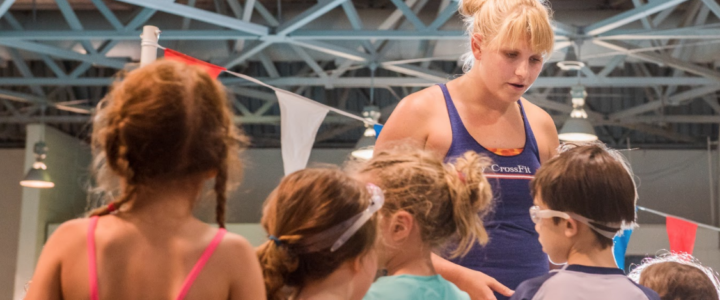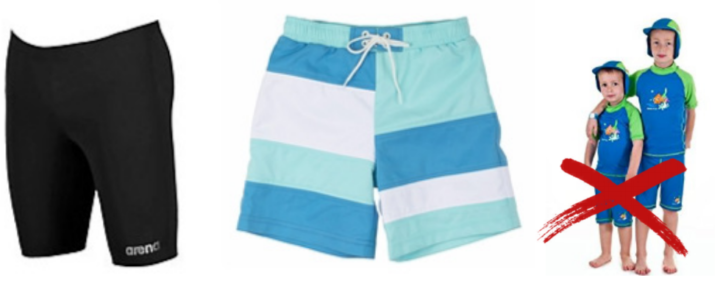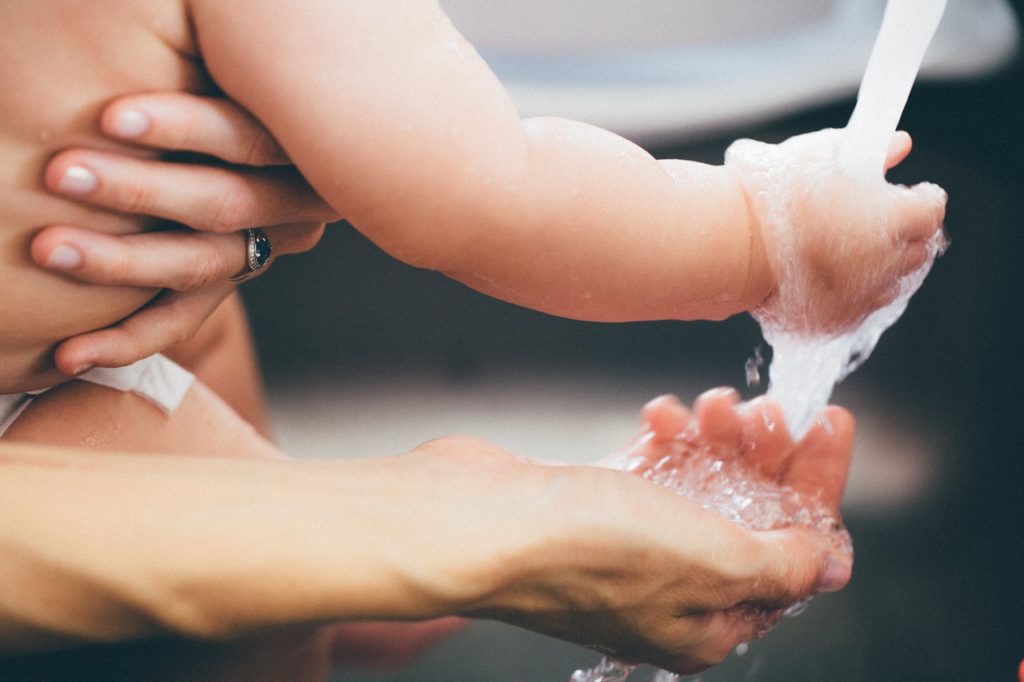The question we most often get at Old City Swim School is:
How long does it take to learn to swim?
At Old City Swim School, we follow the “SwimAmerica” model for teaching both children and adults to swim. SwimAmerica, founded and developed by the American Swimming Coaches Association, is set up to be a 10 Level swimming system that teaches progressively more difficult (and more important) swimming skills. For Adults learning to swim, we use a modified, multi-level approach. For kids, we start off at Level 1 teaching how to blow air out of the nose while underwater. Level 2 is where we introduce floating, Level 3 kicking, and so on. Whether you are a child or an adult, expect to be pushed just outside of your comfort zone to learn the proprioception (sense of body position and movement) specific to swimming breathing and movements.
In our children’s program, the exact moment your child can demonstrate the necessary skills to advance a level, they will be pulled from their current level and advanced in real time, sometimes in the middle of the lesson! There are no minimum time requirements in any level. There are no age requirements for any level. Advancement is 100% solely based on performing specific swimming abilities with minimal help outside of prompts and safety reminders. For adults, we work on two or three levels at once, and while we don’t celebrate in quite the same way for passing a level (unless you really want that sticker for your sticker chart!), we will cheer you on at every milestone along the way.
We’ve seen advancement through the levels at wildly different rates. To break this down and provide you with some level of expectation, we recently reviewed the data for more than one-thousand promotions and found some interesting points.

Generally, there are a lot of items which affect the time anyone spends learning in each level: age, previous swim experience, time spent in the water outside of swim lessons, natural ability, enjoyment/interest in lessons, level of cautiousness, environmental sensitivity, and social-emotional learning style.
Levels 1-4 are our basic ‘freestyle and survival’ levels. In these levels, swimmers will learn floating, kicking, basic in-water breathing, and how to swim 5 meters without stopping.
The most important metric to how quickly someone graduates a level between 1 and 4 is how much water exposure you have gotten throughout life and how consistently you currently practice; followed very closely by age.
But aren’t you experts at this?
While swimming lessons certainly accelerate the speed in which someone learns swimming, 30 minutes once a week can only do so much. No matter the age, general exposure to the water for play/relaxation is vitally important to developing a positive association with swimming and makes water seen as fun and not a threat/bother. Repeated exposure to water on the face (such as practicing putting the head and/or face directly into the stream of a shower, or pouring water over the head and letting it stream into the ears and eyes, even getting into the nose) reduces the fear some have with going under water. For our Level 1 and Beginner Adults, the primary goal is to “dunk” yourself under the water at the wall while inhaling and exhaling rhythmically.
Age is also significantly important. Older kids tend to be less afraid of the size and depth of the pool and therefore are more willing to explore the water more during the lesson. Older kids tend to be able to listen wait, and follow directions of a teacher in a small group better. Older kids and adults tend to have more confidence in expressing their wants and needs during a session. On the other hand, some older children and adults have convinced themselves so strongly that they “just can’t do that”; so breaking down that mental block requires coaching not only from a physical, but psychological approach.
Levels 5-10 and Intermediate/Advanced Adults is where we start working on more advanced skills, such as: breathing to the side, the other strokes outside freestyle, treading water, diving, swim turns, etc…
These advanced skills take people of all ages much more time to acquire than the previous levels. The skills we teach are significantly more refined and we start to look more at technique and aim for swimming for endurance and teaching specialized athletic abilities.
These advanced levels are where we transform someone who’s fairly safe in the water into someone that can confidently dive into any water situation with full confidence and safety. You will also have the foundational skills to walk onto any competitive swim team or compete in a race if your passion for swimming grows into a desire for competition.
As always, if you feel like your progress has been stalled at a certain level and aren’t sure why, please discuss with our staff and we will work together to identify the roadblocks.
The bottom line is that we are teaching a life-long skill and it takes time to learn! Our recommendation is to pick at least a three-month time frame to enroll and make the intention to attend every lesson. We usually see the best results with members that create a fun, special routine of attending once weekly with no breaks for at least 10-12 lessons in a row. Try to come early so you aren’t rushing to get changed or struggling to join the group that has already started. Introduce yourselves to our coaches (we love giving high fives and fist bumps!) Observe how much fun others are having. Maybe eat a special snack or play a song to pump you up on the ride over. We love giving homework to do: You can watch videos at home, or practice in your bathtub or show off you skills to a friend at the local free pools. Regardless of what level or how quickly one advances through the program, consistency and exposure drives increased confidence which creates the best environment for learning.
We want you or your child to enjoy lessons, have fun and with that in place, the skill development will come!









